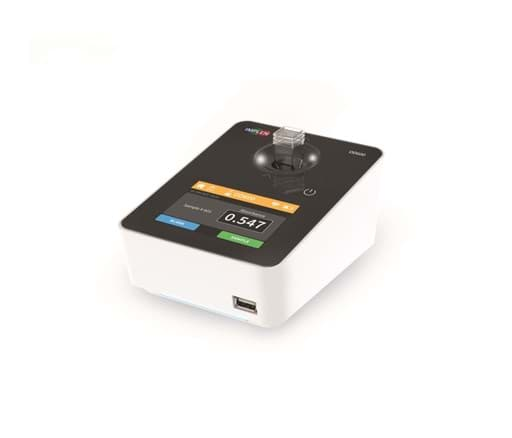
How to end transfection difficulties when you can use mRNA
mRNA transfection: reconsider your expression studies.
Learn more about
In summary?
- DNA transfection versus mRNA transfection
- Why is mRNA not the standard method?
- Advantages of mRNA transfection
- The solution to end transfection difficulties
Why do transfection?
DNA transfection versus mRNA transfection
With all the work waiting for you, choosing the easiest method to get answers to normal cellular processes, disease molecular mechanisms, and gene therapeutic effects (1) is understandable. The most well-known and used technique is DNA transfection (hyperlink naar andere blog) to insert a (modified) gene of interest in your cells. A plasmid DNA is constructed and will form a complex with the transfection reagent to attach to the cell membrane. The cell takes up this reagent-DNA complex to release the DNA into the cytoplasm through endocytosis. Now, we are only at the start of the process. The DNA must enter the nucleus before it can be transcribed, via pre-mRNA, into mRNA. DNA entrance into the nucleus is crucial since mRNA is needed to translate the gene into a protein or perform gene editing studies—unfortunately, the most challenging step to achieve with complex cells.This latter issue can drive you insane. You started with the notion that it would be easy, but now, after each try, it is not working. Even an expensive transfection reagent doesn't do the trick.
Switching to laborious and often strictly regulated viral transfection is usually not an option. And not favorable for pregnant researchers.
The mRNA transfection process is straightforward. mRNA is directly delivered and expressed in the cytoplasm and thus does not require crossing the nuclear membrane. After delivery, the cell machinery translates mRNA into a protein in the cytoplasm.

mRNA disadvantages
Why is mRNA not the standard method?
Technicians struggle with the instability of (m)RNA outside the cell, as it misses the stability a double helix offers. RNA contains ribose sugar, making it more reactive than DNA and unstable in alkaline conditions, which may occur in your experimental workflow. RNA's larger helical grooves mean it is more easily subject to attack by enzymes and more resistant to UV light damage than DNA. Usually, the laboratory fridge is full of existing plasmid constructs or plasmids ready to use to insert a new template. It is harder to change to mRNA vectors. But why stick to DNA plasmids if it doesn't give you the desired results? You can switch to a method requiring working securely.mRNA advantages
Advantages of mRNA transfection
mRNA transfection has some advantages over DNA transfection, which are especially helpful when working with complex cell types in gene editing research:- mRNA tends to transfect more efficiently, reaching higher efficiencies (>80%) for hard-to-transfect cell types.
- Directly after transfection, the mRNA transcription as soon as it enters the cytoplasm results in more rapid protein expression. You are not at the mercy of the unpredictable course of DNA entering the nucleus and the uncertain amount of transcribed mRNA.
- Protein expression is easily adjustable by changing mRNA concentrations or transfection repetition.
- mRNA transfection does not require nucleus entry and is ideal for non-dividing cells.
- There is no risk of insertional mutagenesis, hence no genome modification of the transfected cell when performing transient transfections.
This gene expression method is an ideal solution for the transfection of stem cells, neurons, lymphoma, and many more hard-to-transfect cell types. The transient nature of mRNA transfection is desirable for many applications, including cellular reprogramming, genome editing (CRISPR/Cas9), and vaccines.

Our solutions
The solution to end transfection difficulties
The jetMESSENGER mRNA transfection reagent has proven benefits over other mRNA transfection reagents. With the unmatched transfection efficiency, high efficiency on a wide variety of difficult-to-transfect cells, and extreme gentleness on the cells, the jetMESSENGER is superior to its peers. As it is easy to scale up and down and 2-fold lower in costs compared to Lipofectamine™ MessengerMAX™ this mRNA reagent is ideal for both general laboratory work and biotechnology research.
jetMESSENGER mRNA Transfection Reagent - 0.1 ml
jetMESSENGER mRNA Transfection Reagent - 0.75 ml
FectoCHO CD Expression Medium, 6x1L
FectoCHO Expression System, Kit (S)
FectoPRO 1 ml reagent + 1 ml Booster
Our news

Is more sustainable cell counting possible?
This article discover eco-friendly solutions for cell counting

Introducing Phoenix Instrument: small lab equipment now a...
January 2025 - Phoenix Instrument | Small lab equipment now available at Westburg Life Sciences

New Implen OD600 now available: Fast and accurate determi...
October 2024 - Implen launches the OD600 for accurate determination of cell density at 600 nm. Order it now at Westburg Life Sciences




